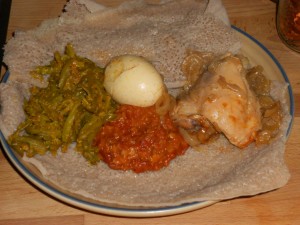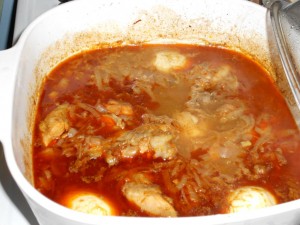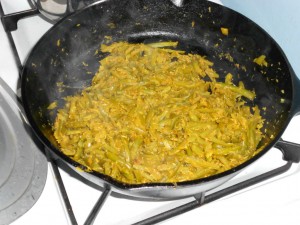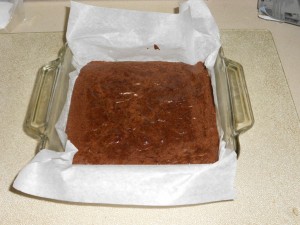I know . . . most people HATE beets! So did I. When I was growing up, mom would serve them (out of a can, or fresh, boiled and then peeled) . . . the only thing I hated more than beets was lima beans!
Well, I’ve seen the error of my ways. I also found a couple of recipes that make even beets taste great! Now I have them every couple of months or so . . . (so, still not my favorite food, but a great way to add some color to your plate).
First, a few notes on preparation . . .
(1) I always peel my beets with a vegetable peeler. I know other folks recommend other ways (e.g., bake and then rub off the skin) but I’ve never been able to get those to work satisfactorily.
(2) When I work with red beets I wear gloves (either rubber dish gloves or the thin clear vinyl gloves sold at pharmacies), and an apron. The red juice WILL wash off . . . but it is easier not to get it on you in the first place.
Okay, here are the recipes:
The original Moosewood Cookbook by Mollie Katzen contained what became my regular Thanksgiving meal—”Comprehensively-stuffed Squash” and “A Colorful Accompaniment.” The “Colorful Accompaniment” was grated beets cooked in orange juice.
Quick Stovetop Beets
- 2 good-sized (fill your hand) red beets (or several smaller ones)
- 1 medium carrot
- 1 Tbls oil (canola or olive)
- 1 clove garlic, crushed
- 3/4 cup orange juice
- salt and pepper to taste
Peel the beets and the carrot (see note on preparation above). Grate/shred the beets and the carrot (use either the side of your box-grater with the 1/4″ holes or a food processor with a grating attachment). Heat the oil in a small frying pan over medium heat. Add the garlic and sauté for a couple of minutes (be careful not to burn it, if you do, start over). Add the grated beets and carrots. Sauté for a few more minutes. Add the orange juice; cook gently 5-10 minutes or until everything is heated through. Season to taste. Serve.
Makes 4 servings.
Roasted Beets and Shallots
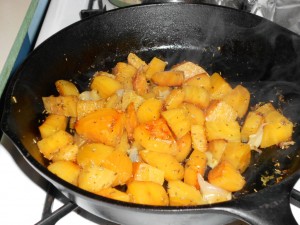
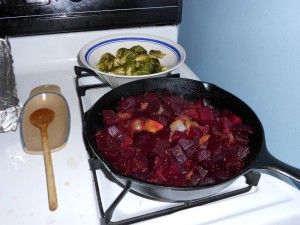
from the Penzey’s Spices catalog (date unknown)
- 4-6 beets, peeled and cut into large chunks (use red or gold or a combination)
- 4-6 shallots, peeled (if small, leave whole after peeling, if very large, cut into chunks)
- 2 tsp. olive oil
- 2 cloves garlic, minced or crushed
- 1/2-1 tsp. cracked rosemary
- 1/4-1/2 tsp. salt, to taste
- 1/4-1/2 tsp. fresh ground black pepper, or to taste
Preheat oven to 375°F. Place the beets in a cast iron skillet or heavy metal roasting pan. Add the shallots, olive oil, garlic, rosemary, salt and pepper. Toss it all together. Cover the pan tightly with foil. Bake at 375°F for 45 minutes or more. (To test the beets for doneness, poke with a knife or fork. When they offer little resistance, they’re done.) Remove the beets from the oven and place in a serving dish. Pour any juices over the beets and serve.
Makes 4 servings.
Note: I remove the foil and check the beets after about 30 minutes, if the pan seems dry, I add a few tablespoons of hot water. Most of the time the beets and shallots make enough juice of their own, but if the foil seal is loose the moisture can escape and the pan can get dry.

